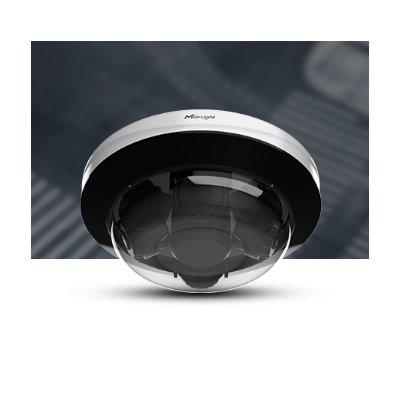 |
| IHS estimates that sales of body-worn cameras reached over 5,000 units per year during 2013 for the first time |
In early May 2014, London’s Metropolitan Police announced it would be spending almost £1 million on a trial of 500 body-worn video surveillance cameras for police officers in 10 of London’s boroughs. The move comes after several high-profile cases in recent years calling into question the integrity and transparency of police officer’s actions – for example with the shooting of Mark Duggan (which later sparked the London riots of 2011).
IHS take:
“Fitting video surveillance camera systems on mobile law enforcement is not a new idea – in fact over $200 million was spent on these systems worldwide during 2013. However, so far the focus of this spend has been on in-car video – typically two-camera systems that offer both forward facing and rear seat occupant coverage. In the majority of cases, the motivation for fitting these cameras came through the video’s usage in prosecution cases as evidence, although as the sue-culture has become more popular there has increasingly been a benefit in helping protect against legal claims for malpractice.
Body-worn cameras are a much later addition to this industry segment – IHS estimates that sales reached over 5,000 units per year during 2013 for the first time. In early adoptions, the body-worn cameras did not prove to be as successful as hoped. Issues arose with field of view, focal length and above all else, simply whether or not the camera was pointing in the right direction when it mattered. As a result, officers were finding that when they needed to search through video footage and prepare it for court, the video either did not show what it needed to, or the quality was too poor to be admissible as evidence. The likely return therefore didn’t outweigh the financial cost to purchase the systems. However, the technology has since improved and the newest cameras now offer a viable addition (but not replacement) to in-car video systems in providing law enforcement with total video surveillance solutions.
"Many arguments are made |
This is where trials like the Met Police are planning are most interesting though – it’s not necessarily that they are adopting body-worn cameras now that they’ve improved enough to be used as evidence, it’s more that they offer a solution to a different type of problem. The motivation is not just about showing a tangible benefit (for example several thousand pounds a year in avoided legal claims) but that it can help rebuild the public trust in police officers and their conduct. Body-worn cameras in this case are using video surveillance technology as a marketing tool, rather than primarily being a security system.
It will therefore be interesting to see the progress of this trial in how it answers two key questions that could yet hold back growth in system sales. Firstly, will the public react in a positive way in that systems help improve public trust and reduce the frequency of legal claims against officers. Secondly, will the police officers themselves accept the technology? Many arguments are made against the ‘big brother’ culture and there is understandable resistance towards the idea that your every move at work could be recorded and scrutinised. However, if it can be shown to clearly reduce an officer’s risk in the field and improve public co-operation, then maybe that resistance will reduce.
Post-recession, public services such as law enforcement don’t have a lot of funding to spend in any area – so system cost will always be a concern – but if this Met Police trial shows clear benefits for the police, public relationships and even the government, then it’s unlikely that this will be the last trial scheme to be announced.”


















